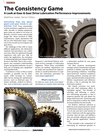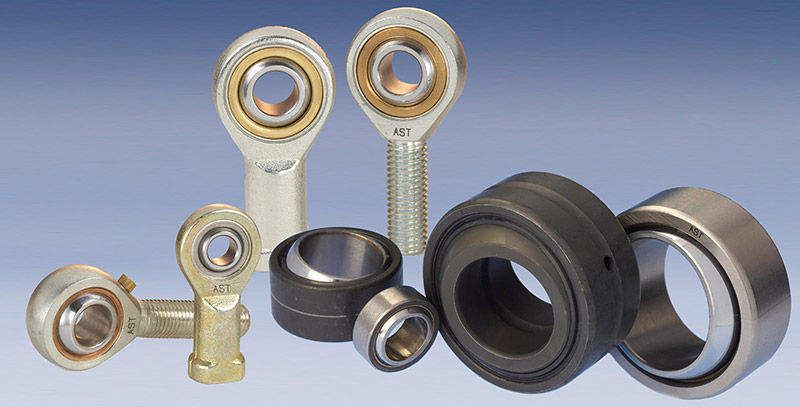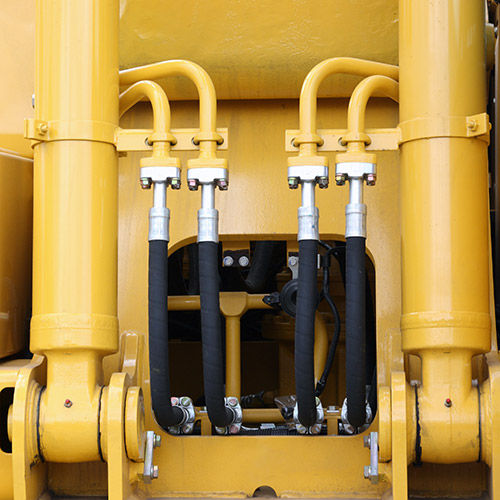Unfortunately, not all gears are created equal. Therefore, certain gear types are more challenging to lubricate than others.
“Gears types with high sliding speeds and regimes of mixed friction are the most challenging,” said Sitta. “This type of gearing results in high shear stress on the lubricant requiring good extreme pressure and anti-wear additives.”
Both Girard and Roberts also cite worm gears as challenging when it comes to lubrication.
“There are several types of worm gear drives, each with their own set of challenges. The simplest type of worm gear set is a steel, cylindrical worm gear in mesh with a steel bull gear. These types of gear sets can typically operate on an extreme pressure type of gear lubricant. It gets more challenging when single (hourglass worm gear shape) or double enveloping (hourglass worm gear shape and concave bull gear teeth) worm gears are introduced into the mix, often with brass or bronze sacrificial bull gears,” said Roberts.
Due to a combination of elevated temperatures and extreme sliding loads at the microscopic asperity contacts, EP gear lubricants are typically avoided as they can become corrosive to yellow metals and cause premature wear in the sacrificial gear. These types of worm gear drives typically require a lubricant that can provide greater protection against these extreme sliding loads. This typically includes synthetic industrial oils (non-EP), compounded gear oils (which include synthetic fatty acids), or polyalkylene glycol (PAG)-based gear lubricants to facilitate more efficient sliding in the worm/bull gear interface, according to Roberts.
Since operating temperatures, loads on the gear teeth, gear speeds, and gear metallurgy vary by application, it is important to choose an appropriate lubricant that is in accordance with OEM specifications to prevent premature gear failure as mentioned earlier.
“OEMs usually perform the necessary testing to determine which gear lubricant types are appropriate for their equipment under expected service conditions and duty cycles. Unfortunately, many end users take lubricant selection into their own hands and perform their own experiments with various lubricant types, which puts their equipment at unnecessary risk,” Roberts said.
Keeping an Eye on the Equipment
Many of the companies involved in gear and gear drive lubrication don’t just offer products and disappear to the next sales call. It’s important to have a failure/wear analysis program in place to monitor the machines.
“Consistent analysis of the gear fluid helps detect wear in metals,” said Girard. “We offer lubricant analysis with tracking at no charge to better serve our customers.”
Oil or grease analysis is a method of condition monitoring that tells you about the operating condition of the gearbox. This is essential to predict malfunctions or possible breakdowns.
“Ideally, the result of the analysis will confirm if there is an existing problem with a component in the unit and this will allow time to schedule a preventive procedure to correct the situation,” Sitta said.
Roberts said that oil analysis can also tell you valuable information about the current condition of the fluid in-service, as well as the equipment itself.
“The most common routine monitoring test slate that we recommend for gear drives is simple, yet very effective. It includes viscosity, acid number, water contamination, spectroscopy analysis (wear, additive and contaminant metals), and particle quantifier,” Roberts said. “Through viscosity and spectroscopy analysis alone, we often find that a lower viscosity lubricant has been introduced into a gear drive, causing premature gear and bearing wear. Other times, we find that viscosity and acid number have become elevated, which are indications that the fluid has oxidized and exceeded its useful life.”
“Sometimes, through cyclic fatigue (three possibilities are old equipment, excess loads and misalignment) particle quantifier identifies ferrous wear particles that are too large for the standard spectrometer to read or, in other words, would have been missed had it not been for the particle quantifier. For this reason, we recommend including particle quantifier in the routine test slate for critical gear drives. If ever a spike is observed while trending wear rates, analytical ferrography should be considered. While this is more expensive than the routine test slate, it can offer valuable information about the size and type of wear that is occurring, rather than just that there is wear occurring,” Roberts said.
Synthetics and Energy Efficiency
All companies interviewed for this article discussed how upgrades to reliability programs, routine oil analysis, maintaining proper fluid levels and utilizing in-house testing to confirm product viability has improved gear and gearbox reliability over time.
An additional factor to consider is the energy efficiency of synthetic lubricants.
“In most all cases the use of a synthetic lubricant is the best choice because it improves the operating efficiency of the gears and bearings, reduces the oil temperature resulting in slower ageing of the oil and also extends the oil change intervals,” Sitta said.
Roberts believes the importance of energy efficiency depends on the goals and preferences of plant personnel; preventing downtime due to equipment failure is typically more of a motivating factor for those seeking to improve lubrication and maintenance practices. Potential cost savings by reducing downtime are generally greater than those achievable with energy reduction. “However, when equipment is operating properly, and lubrication practices are optimized, significant savings are also possible with increased energy efficiency,” he added.
He continued, “Perhaps the time when friction is most prevalent is during equipment startup, when boundary lubrication exists. During this time, the viscosity of the lubricant and its additive package play a significant role in the amount of friction that two opposing surfaces will experience. Load and surface roughness also come into play, but there is little that can be done to change that, regardless of lubricant selection.
“Selecting a lubricant of the proper viscosity and additive package can reduce the friction coefficient between opposing surfaces, thus affecting energy consumption required to operate the gear drive. Synthetic gear lubricants often have naturally lower traction coefficients than petroleum hydrocarbon-based fluids and can offer enhanced energy efficiency. A combination of these factors can have a synergistic effect on energy costs, especially where low voltage, high horsepower electric motors are driving the gear drives. When a plant has several gear drives that use the same electric motors, even a fraction of a percent of amperage reduction can add up to significant savings, which will outweigh the cost of using a premium lubricant, including the higher price of synthetics,” Roberts said.
In the end it comes down to the old adage, “You pay for what you get.” Shortcuts and cost-savings do not translate into efficient manufacturing.
“OEMs and end users that invest in high-quality lubrication methods will simply allow gearboxes to last longer and their customers will realize increased productivity,” Girard said.
It Still Comes Down to Science
Roberts said that OEMs are requiring next generation fluids to have much better ancillary performance with respect to the gear set in terms of oxidative and thermal stability, seal compatibility, bearing protection and fatigue life, compatibility with paints and corrosion-resistant coatings, as well as impact on the environment.
Spray patterns before (top) and after (bottom) Lubrication Engineer’s Pyroshield Syn XHvy Open Gear Lubricant was introduced. Photo courtesy of Lubrication Engineers.
“Many of these next gen fluid requirements stem from the use of smaller fluid sumps, which puts higher thermal stress on the fluid. Also, in many cases, gearboxes are selected for applications where actual loads are approaching the upper end of design loads, if not exceeding them. In these cases, the fluid must be able to tolerate the higher thermal stresses, as well as the higher loads that it is subjected to, while still providing the expected service life of the lubricant as well as protection to the equipment. Because of greater demands of fluid life and fatigue life of bearings and gears, improved fluid cleanliness is an area that is receiving more attention with these next generation fluids,” Roberts said. “Due to so many uncontrollable variables, after lubricants have left the manufacturing facility, it is not practical or economical for fluid manufacturers to deliver extremely clean oil. In the future, the importance of fluid cleanliness to meet these higher demands will influence end users to increase filtration efforts onsite to keep the in-service lubricants cleaner and dryer.”
Regarding efficiency improvements and sustainability, Sitta believes that new formulations of lubricants for gearbox applications are currently available with water as a main component of the formulation.
Improvements to Lubrication Engineers reliability program have cut maintenance and repair costs dramatically.
“This has shown a marked improvement in reducing the traction coefficient, lowering the operating temperature and improving the efficiency,” Sitta said. “In addition, the biodegradable lubricants for marine applications for example are improving with improved performance of Ester base oils.”
Lubrication Trends and Considerations
Most lubrication methods have been around since the dawn of the industrial revolution; however, technology continues to improve, and new innovations, or tweaks to these conventional methods, are often introduced. Roberts discussed two examples:
Technology in the automotive industry: Detroit’s new tandem rear axles with Axle Lubrication Management (ALM) System reduces fuel consumption by regulating the oil level at the ring gear to reduce fluid friction between the gear and the gear oil. This is accomplished via the use of a valve that has been integrated into the ring gear cover.
Remote-mounted sensor technology: Monitoring your equipment’s health accurately and efficiently can be an effective way to help decrease downtime and minimize unforeseen costs. This is now more important than ever, as system requirements continually demand improved performance and greater availability.
“Bluetooth technology is working its way into sensors that can wirelessly transmit data via email or text notifications, including low level warnings, changes in pressure, temperature or humidity conditions, and fault indicators. As this technology develops, we foresee that it will become widely popular, as users will be able to optimize asset and system performance remotely based on real-time conditions, especially in remote areas that are difficult, or dangerous to access,” Roberts said.
Much like gear manufacturers, lubrication companies will need to pay close attention to the changing paradigm taking place in the automotive industry.
“The greatest change coming to the range of automotive lubricants is the trend toward more electric vehicles,” Sitta added. “The trend is moving toward specialty greases and synthetic lubricants for high-speed, electrically-driven gearboxes.” 
Kluber Lubrication
Phone: (630) 647-4104
www.klueber.com
Lubrication Engineers, Inc.
Phone: (800) 537-7683
www.lelubricants.com
Lubriplate Lubricants Co.
Phone: (800) 733-4755
www.lubriplate.com










